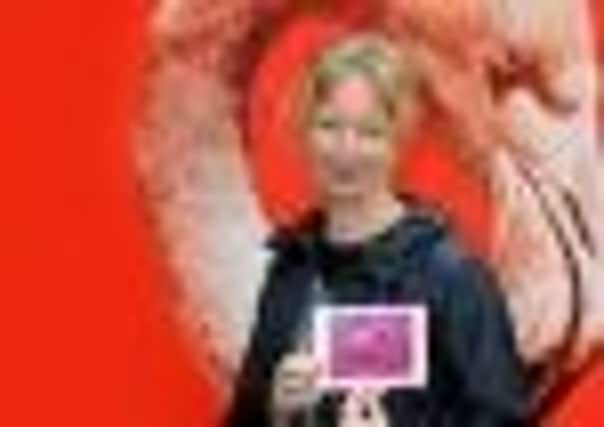An instinct for animal art


For artist Kirsten, then a volunteer at a game reserve in Zimbabwe, it was love at first cuddle with orphaned vervet monkey Tsoko.
“It was just amazing to be that close up with this little primate and see how like us they are,” she says. “It was so young, it had to be hand-fed. Its parents had probably been killed for bush meat by bow and arrow or catapult.”
Advertisement
Hide AdAdvertisement
Hide AdUnder Kirsten’s care, the monkey quickly grew in size and confidence, becoming a mischievous imp, learning to steal earrings out of ears and developing an alarming taste for alcohol. “He was very naughty and very funny,” she remembers.
The experience, 16 years ago at the Imrie reserve, left Kirsten with an enormous soft spot for monkeys and primates in general – an affection which comes across in her art. But chimps and their like are not the only animal subjects for Kirsten’s paintings, several of which have been made into cards now on sale at Edinburgh Zoo. Lions, leopards and the other creatures which inhabited the reserve run by the eccentric Travers family also feature.
In fact, the 47-year-old credits her time at the reserve for turning her into an artist – despite having studied art at college, she had drifted from job to job in shops or waitressing, eventually qualifying as an Alexander Technique teacher after a back injury at 24.
It was while visiting her parents, Hanne and Francis, who lived in Zimbabwe at the time, that she got the chance to volunteer at the reserve. It was run by Norman Travers, famous for his unorthodox and pioneering work with African elephants and black rhinos and who died last year. At his funeral, elephants, unprompted, came to stand by his graveside, a fact which still makes Kirsten, above, well up.
Advertisement
Hide AdAdvertisement
Hide Ad“It was an amazing place and I was very lucky,” she says, her voice thick with emotion. Her role was supposed to be in hospitality, but the Travers family encouraged her to follow her talent, frequently packing her off with her sketchbook into the bush. It was an opportunity to get up close with the animals – although sometimes a little too close.
“During the day the black rhinos were allowed out into the bush with armed guards, at night they were locked up to keep them safe [from poachers]. One day the guards decided to go on strike. There was a zoologist from Britain staying there at the time – she just handed me a stick and said: ‘I’ll follow these rhinos, you follow those ones’. So I had a portfolio in one hand, a stick in the other and I followed the rhinos into the bush.”
Unfortunately, her rhino guarding skills weren’t as finely honed as her artistic ones and the animals crashed through a fence on to a road, nearly careering into a drunk local and Kirsten was forced to flag down a passing car. “I just shouted: ‘Go and get help’,” she laughs.
Her visits to Zimbabwe and the reserve continued until her parents were driven off by President Mugabe’s brutal land reforms. Back in Scotland, she still teaches Alexander Technique – including to children at the music school at Broughton High School – but also has a studio in South Lanarkshire. Her artistic output swelled 18 months ago during a period of enforced confinement after an operation to remove a fibroid tumour.
Advertisement
Hide AdAdvertisement
Hide AdNow she is hoping to create more animal images, this time using the zoo’s inhabitants as her inspiration. “There is so much fun, so much variety in texture, in colour and in comedy in animals,” she says.
• Kirsten is opening her studio as part of the Biggar Little Festival, October 14 to 29. Visit biggar-little-festival.com or kirstenharrisart.com. Kirsten’s cards are on sale at the zoo shop, priced £2.50.